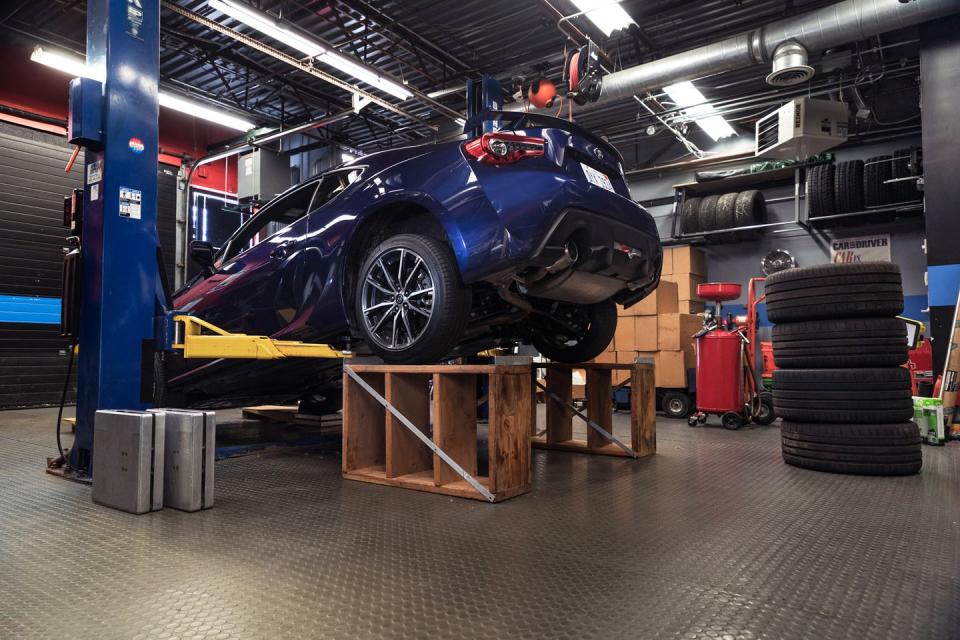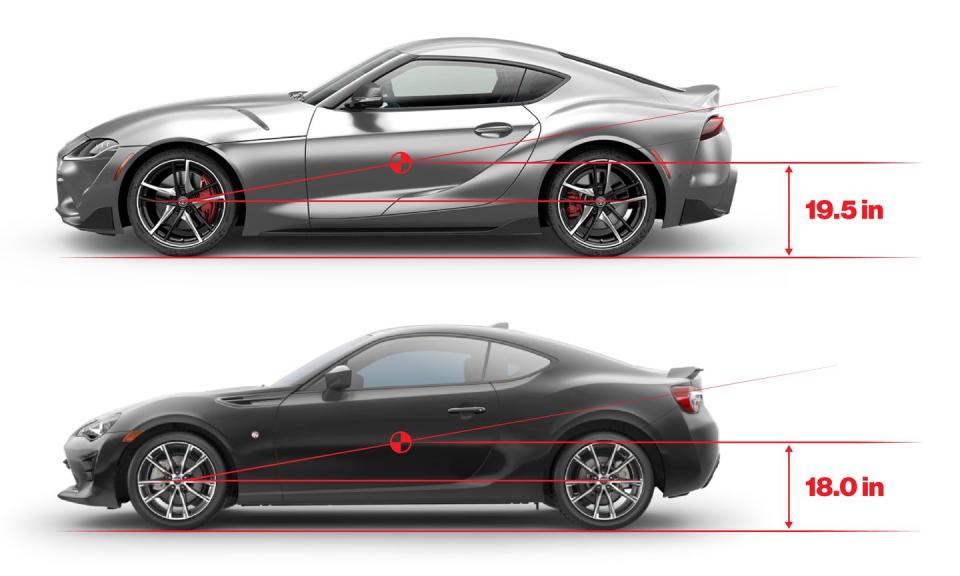No, Toyota, the Supra's Center of Gravity Is Not Lower Than the 86's

Toyota told the world that the 2020 Supra has a lower center of gravity than the little Toyota 86 (formerly known as the Scion FR-S).
C/D did our own testing and found that the 86's is, in fact, 1.5 inches lower than the Supra's.
Toyota did not provide us with documentation that would explain the discrepancy.
In the lead-up to the launch of the revived 2020 Supra, Toyota made a bold claim: that the center of gravity in the company's new two-seat sports car is lower than that of the brand's affordable 86 (née Scion FR-S) sports coupe. "All-out efforts were made to lower the center of gravity, resulting in a lower center of gravity than in the 86, which features a horizontally opposed engine," Toyota claimed in its press release.
This seemed unlikely, given the 86's 0.3-inch-lower roofline and its horizontally opposed Subaru four-cylinder engine that carries its mass low, so we tested it for ourselves following our typical procedure, which we've explained here.

The result: The Supra came in at a respectable 19.5 inches, matching the Ford Mustang Shelby GT350. But the 86 is substantially lower at 18.0 inches, down there with Miatas and Corvettes on the very low end of anything we've measured. This is precisely why we do our own testing and don't blindly trumpet what automakers say, and we've uncovered more than a few fibs over the years.

You'll recall that the center of gravity (CG) is the hypothetical point where the entirety of a vehicle's mass resides, the sum of all of its individual components. And it's important because the lower the CG height, the less weight transfer that occurs under braking and cornering, which makes for even tire loading and better handling.
When we reached out to Toyota for comment, they stated that the engineering team in Japan had measured a six-cylinder Supra—remember, a four-cylinder is available in other markets—with 18-inch wheels, rather than the 19s that are standard here. Still, a small mass difference relatively close to the center-of-gravity height would have only the tiniest effect. Toyota also didn't provide any documentation, measurement method, or the actual numerical results so that we could compare it with ours.
You Might Also Like

 Yahoo Autos
Yahoo Autos 